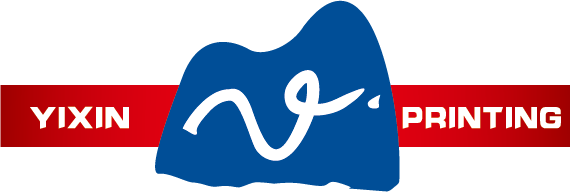You should always check what your mailer box supplier says. Do not trust words about sustainability right away. Many companies say things like “eco-friendly” or “green.” They often do not show proof.
Ask for certifications from other groups. Ask for audits of the supply chain. Ask for updates that you can measure.
Do not believe pictures of nature or catchy slogans. Make sure there is proof.
Ask for clear papers and life cycle analysis. This helps you see what is true.
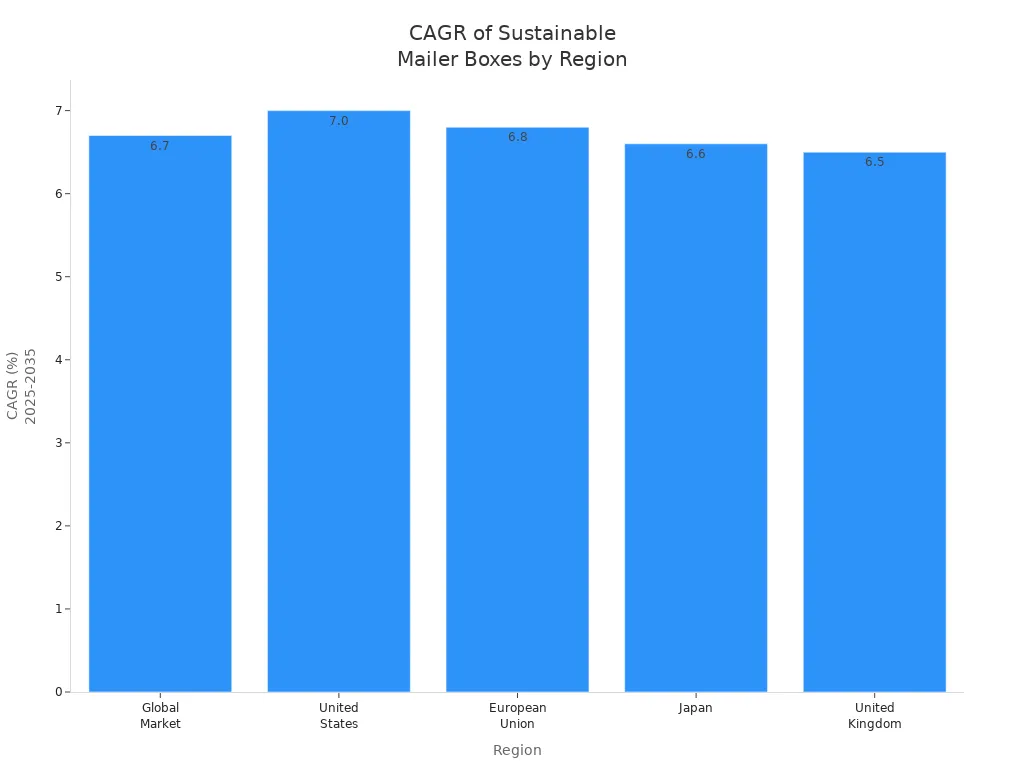
Use this checklist to keep your brand safe. Make sure your packaging matches what you care about.
Key Takeaways
Always ask your mailer box supplier for proof. This can be certifications or updated reports. These show their sustainability claims are true.
Check if the packaging materials have recycled content. Also, see if they use renewable sources. This helps you make eco-friendly choices.
Look for trusted third-party certifications. Examples are FSC, SFI, PEFC, and APR. These help you avoid greenwashing. They also build customer trust.
Request a Life Cycle Analysis (LCA) from your supplier. Make sure it is checked by an independent group. This helps you know the full environmental impact of your packaging.
Ask about the supplier’s production process. Find out about energy use, waste management, and pollution controls.
Pick suppliers that use eco-friendly inks. Soy-based or water-based inks are good choices. These inks lower harmful emissions. They also make recycling easier.
Think about transportation practices. Ask about shipping emissions and local sourcing. This can help lower your packaging’s carbon footprint.
Ask about end-of-life solutions and reusability. Also, check supply chain responsibility. This makes sure your packaging supports a circular economy and fair labor.
1. Materials Used
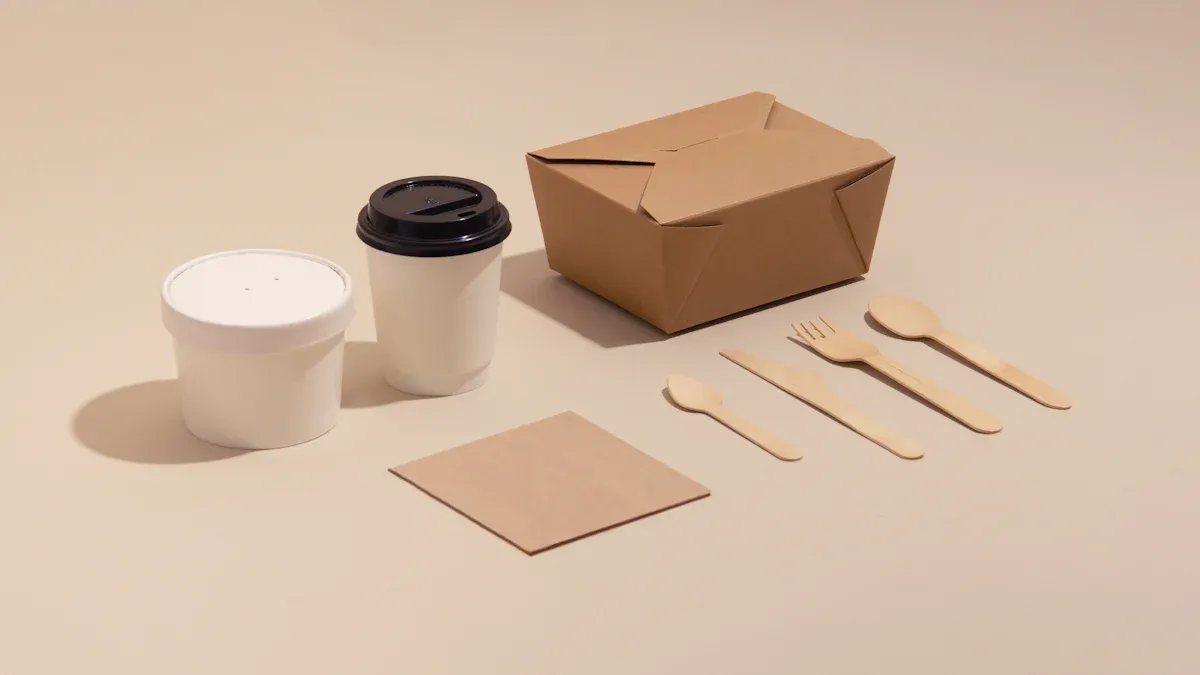
When you check a mailer box supplier, ask about the materials they use. Good questions help you learn how their packaging affects the environment. This makes sure your brand supports sustainable choices.
Recycled Content
Ask your supplier how much recycled material is in their mailer boxes. Some top suppliers use mailers made from all recycled materials. Paper mailers can have up to 97% post-consumer recycled material. Poly mailers often have all recycled content, with half from post-consumer sources. In Canada, corrugated boxes usually have about 77% recycled content. In the United States, most corrugated mailer boxes have at least 35% recycled material. Some places offer up to 90%. These numbers show recycled content changes by supplier and location. You should expect at least 35% and try to find options close to 100%.
Post-Consumer Waste
Post-consumer waste means materials that people used and recycled. Ask your supplier for the exact percentage of post-consumer recycled content. More post-consumer content means less need for new resources. It also shows a stronger promise to reuse materials. For example, some paper mailers have up to 97% post-consumer recycled material. Poly mailers may have about 50% post-consumer content. These numbers show less trash goes to landfills and fewer resources are taken from nature.
Tip: Always ask for details about recycled content. This includes post-consumer and post-industrial percentages. It helps you compare suppliers and pick the best one for the planet.
Renewable Sources
Ask about renewable sources in mailer boxes. Renewable materials come from things that can grow back, like forests or farm leftovers. Some suppliers use paper from certified forests. This means trees are harvested responsibly and forests stay healthy. Compostable mailers exist, but they are not common. This is because composting can be hard and sometimes gets mixed with the wrong stuff. Biodegradable materials are rare and not counted much in mailer boxes. Choose suppliers who use renewable sources and give clear proof.
Ask for material statements and details about where things come from. Good suppliers give Bills of Materials, certifications, and EcoReports. These papers prove their claims and show their supply chain is clear. Statements of compliance show they are honest about sourcing. Suppliers also help brands follow packaging rules and laws about sustainability.
Note: Documents are very important. Ask your supplier for updated certificates and clear sourcing statements before you choose.
2. Certifications from Your Mailer Box Supplier
If you want to know your packaging is really sustainable, look for trusted certifications. These are given by other groups, not your supplier. They help you see if your mailer box supplier meets real environmental goals. Certifications also stop greenwashing and help your customers trust your choices.
FSC and Other Standards
Always ask your mailer box supplier to show proof of third-party certifications. The most well-known certifications for mailer boxes are:
FSC (Forest Stewardship Council)
SFI (Sustainable Forestry Initiative)
PEFC (Programme for the Endorsement of Forest Certification)
These certifications mean the materials in your mailer boxes come from forests that are managed well. They care about nature, people, and the economy. For example, International Paper uses fiber certified by FSC, SFI, and PEFC. In 2021, 32% of their fiber came from these trusted sources. FSC is known for its strict rules and science-based choices. SFI and PEFC are important too. SFI focuses more on what the industry needs. PEFC supports national standards.
Tip: Look for FSC, SFI, and PEFC when you want to show your packaging is sustainable.
Here is a table to help you compare the main features:
If you order custom mailer box inserts or mailer boxes custom for your brand, always ask for these certifications. They help you meet what customers want and support your marketing.
Association of Plastic Recyclers
If your packaging uses plastic, ask about the Association of Plastic Recyclers (APR) certification. APR sets rules for plastic recyclability. This certification means your plastic mailer boxes custom or custom mailer box inserts can be recycled in most places. It helps you make sure your packaging does not end up in landfills.
How to Verify Certification Authenticity
Never just believe a certification is real. Follow these steps to check if it is true:
Ask your mailer box supplier for the certification number.
Search for the number on the official certifier’s website, like the FSC Public Dashboard.
Ask for extra papers, like Safety Data Sheets or statements from raw material suppliers.
Ask for contact details of raw material suppliers if you want to check yourself.
Remember, certifications like FSC need yearly self-reports and audits. This adds more trust.
Note: Always check the certification number online. This step helps you avoid fake claims and keeps your brand safe.
3. Documentation Provided
When you check a mailer box supplier, ask for clear papers. Good suppliers give proof for their sustainability claims. They share updated certificates and statements that follow rules. These papers help you check recycled content and sourcing. They also show if your mailer boxes custom or custom mailer box inserts are made the right way.
Certificates
Ask your supplier for the newest certificates and reports. Top suppliers have many trusted certificates. These show they care about quality and honesty. Look for these kinds of certificates:
Quality Management System certificates show high standards.
Third-party certificates like SCS Global Services prove recycled content.
FSC® Chain of Custody certificates check forest materials are sourced right.
Ecovadis ratings cover environment, labor, ethics, and buying.
Verified Recycled Content certificates from Intertek use checks and data.
Tip: Make sure certificates are up-to-date and easy to check online. This helps your brand avoid fake claims and builds trust with customers.
Many suppliers work with groups like How2Recycle and the Sustainable Packaging Coalition. These groups help you share recycling info with customers. They also support better packaging design for custom mailer box inserts.
Compliance Statements
Ask your supplier for statements that show recycled content and sourcing. These should include:
Papers on how much recycled content is in your mailer boxes custom.
Bills of Materials list all parts and where they come from.
Scope certificates like Recycled Claim Standard (RCS) check recycled content for poly mailers.
FSC® License Codes and scope certificates track fibers in paper packaging.
Suppliers such as EcoEnclose give these papers for honesty. Intertek’s program also gives reports and marks, following ISO rules. These papers help you check your packaging meets laws and best practices.
Note: Asking for detailed statements gives you proof of sustainability for every order, including custom mailer box inserts and mailer boxes custom. These papers make it easier to show your brand’s values and meet what customers want.
4. Life Cycle Analysis
If you want to know if your packaging is really good for the planet, you need to look at more than just what it is made of. Ask your mailer box supplier for a Life Cycle Analysis, or LCA. This report shows how your mailer boxes custom and custom mailer box inserts affect the environment from beginning to end.
Third-Party Verified Data
You should ask for LCA data checked by another group, not just the supplier. This means someone else makes sure the numbers are right. These LCAs use real facts and follow strict rules, so you can trust them. A good LCA looks at things like:
How much oil, gas, and coal are used.
How much CO2 and other gases go into the air.
How much water is used, even in dry places.
If extra nutrients cause too much algae in lakes and rivers.
How much rare material is used up.
How people’s health is affected for a short time.
If the process is bad for fish and other water life.
How much packaging material is needed.
A third-party-checked LCA uses facts from every step, from getting raw materials to throwing the box away. You can compare mailer boxes custom to other types of packaging. This helps you pick what is best for your brand and the earth.
Tip: Always ask your mailer box supplier for the LCA report. Make sure it is checked by a trusted group.
Here is a table that shows how much better packaging can help the environment:
You can see that using more sustainable mailer boxes custom and custom mailer box inserts can help a lot.
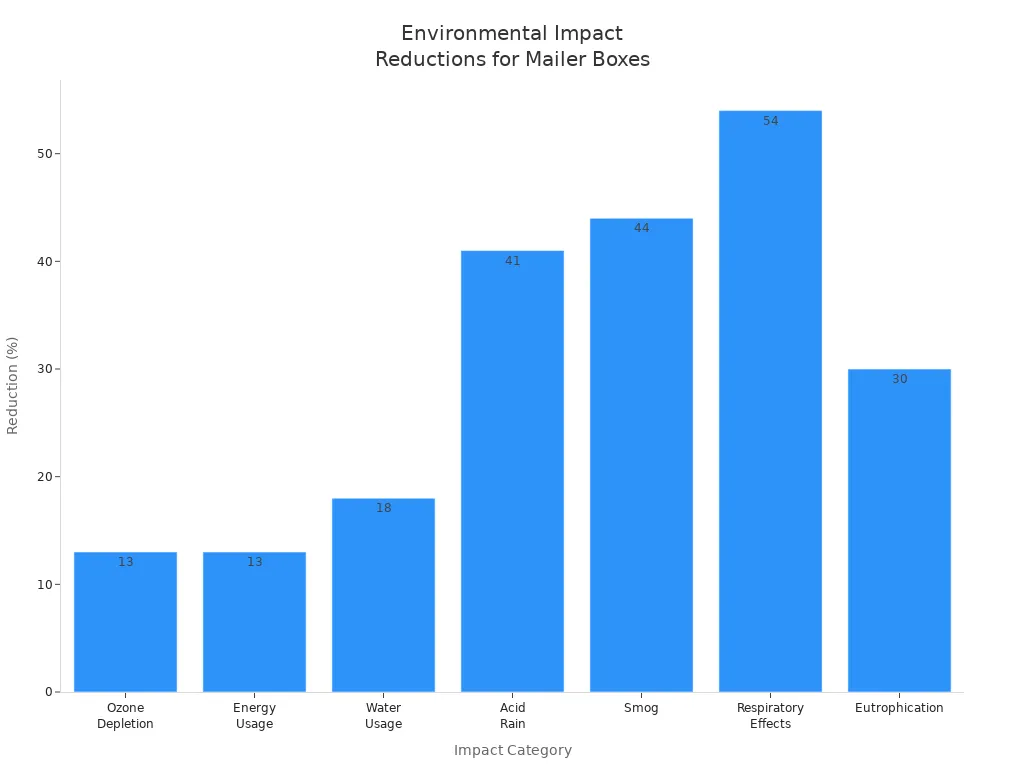
Environmental Impact
A Life Cycle Analysis checks every part of the packaging’s life. This means looking at where the materials come from, how the box is made, how it is shipped, how it is used, and how it is thrown away. There are four main steps:
Decide what you want to measure and why.
Gather facts about all the energy, water, and materials used.
Check the effects, like global warming and water use.
Look at the results and find ways to do better.
When you use LCA facts, you can see where your mailer boxes custom and custom mailer box inserts have the biggest effect. For example, studies show that using reusable packaging instead of single-use can lower carbon emissions by up to 60%. It can also cut solid waste by 86%, use 80% less water, and save 64% on energy. These numbers come from trusted studies that other experts have checked.
Note: LCA helps you make smart choices for the planet. It gives you proof to show your customers and helps your brand stand out.
If you want your brand to be a leader in sustainability, always ask your mailer box supplier for an LCA checked by another group. This makes sure your custom mailer box inserts and mailer boxes custom are as good for the environment as possible.
5. Production Process
When you check a mailer box supplier, look at more than materials. The way boxes are made matters for the planet. Ask your supplier how they use energy and handle waste. This helps you pick mailer boxes custom and custom mailer box inserts that match your brand’s green goals.
Energy Use
Ask your supplier what kind of energy their factories use. Some use wind or solar power. Others use fossil fuels, which make more pollution. Using cleaner energy makes mailer boxes custom better for the earth.
Many suppliers use plant-based stuff like bagasse or hemp hurd. These need less energy to make.
Some factories use green energy or buy credits for renewable power.
Suppliers may have machines that use less electricity.
Good suppliers keep track of their energy use every year.
Tip: Ask for a list of energy sources. Find out how much energy comes from renewables and non-renewables.
You can also ask about pollution. Making mailer boxes custom can create greenhouse gases. These come from burning fuel and making materials. Suppliers who use clean energy and smart machines make less pollution.
Water use is important too. Making paper for custom mailer box inserts needs lots of water. Ask your supplier how they save water. Some use rainwater for growing materials. Others recycle water in their factories. Many follow rules to stop water pollution and save water.
Waste Management
Handling waste is a big part of making packaging better for the planet. You want your mailer box supplier to follow these steps:
Prevention: Make products and packaging that do not create waste.
Reduction: Make mailer boxes custom strong and easy to use again.
Reuse: Fix or use boxes and custom mailer box inserts again.
Recycling: Collect and reuse materials through recycling.
Energy Recovery: Use waste for energy only if nothing else works.
Disposal: Throw away waste or burn it only if there is no other way.
Ask your supplier if they check their waste. These checks help them find and fix problems. Many suppliers change products to use less material. Some sell or reuse leftover stuff. Others hire experts to recycle or throw away waste the right way.
Suppliers may collect used custom mailer box inserts and make new ones from them.
Some brands teach people how to recycle or reuse packaging.
Good waste handling means putting trash in landfills the right way and stopping illegal dumping.
Note: Always ask for details about how your supplier handles waste, pollution, and water. Ask for reports or checks that show what they are doing.
When you ask these questions, you help your brand choose mailer boxes custom and custom mailer box inserts that are better for the planet.
6. Packaging Inks
The ink on your packaging is important. It matters just like the material. The right ink can help the planet. It also keeps your brand looking good. Ask your mailer box supplier what inks they use for mailer boxes custom and custom mailer box inserts.
Eco-Friendly Options
There are different eco-friendly inks for mailer boxes custom and custom mailer box inserts. Water-based inks use water instead of harsh chemicals. These inks do not let out many bad fumes. They work well on paper, cardboard, and even cloth. Soy-based inks use oil from soybeans. They are safe, break down in nature, and can be composted. These inks break down faster than inks made from oil. They do not leave behind anything bad. Vegetable-based inks come from plants like linseed or corn. They make bright colors and help with recycling.
Some companies, like Greenerprinter and Warneke Paper Box, use soy and vegetable inks for packaging. Flexographic inks, used for mailer boxes custom, have at least 20% soy protein. These inks help cut down on pollution. They also make recycling easier. Soy-based inks do less harm to fibers when removing ink. This helps keep materials in use for custom mailer box inserts.
Tip: Always ask if your mailer box supplier uses soy-based, water-based, or vegetable-based inks. These choices show they care about the planet.
Here is a table to compare:
Chemical Safety
You should always ask about ink safety for mailer boxes custom and custom mailer box inserts. Old-style inks use oil from the ground. These inks let out VOCs. VOCs are gases that can hurt the air and people’s health. VOCs can make eyes and skin feel bad. Sometimes, they can cause bigger health problems. They also make air pollution worse.
Eco-friendly inks, like water-based and soy-based, have fewer VOCs. They are safer for workers and people who use the boxes. These inks follow tough safety rules like ROHS and REACH. Groups like the U.S. EPA set rules for how much VOCs inks can have. Your mailer box supplier should tell you about VOCs in their inks. They should also say if they follow these rules.
Note: Always ask for safety sheets and VOC reports from your mailer box supplier. This makes sure your mailer boxes custom and custom mailer box inserts are safe for people and the planet.
Picking the right ink keeps your brand, your customers, and the earth safe. Make sure your mailer box supplier can answer questions about ink safety and being green.
7. Transportation Practices
When you pick a mailer box supplier, think about how your packaging gets to your customer. The way boxes travel can change your brand’s carbon footprint. Asking good questions helps you make smart choices for the earth and your business.
Shipping Emissions
Ask your supplier about the carbon footprint from shipping. Moving packages makes up about 70% of the carbon footprint for each package. Using boxes that are too big or half-empty mailer boxes custom means more trucks are needed. This causes more pollution. Right-sized packaging can cut empty space by about 14%. This lets more packages fit in each truck. Fewer trucks are needed, so there is less pollution.
Ask if your supplier uses route optimization software. This software helps drivers find the shortest and fastest way. It saves fuel and lowers emissions.
See if your supplier works with eco-friendly shipping companies or offers carbon-neutral shipping.
Ask for data on average emissions for your custom mailer box inserts and mailer boxes custom.
Tip: Poly bubble mailers can lower your carbon footprint. They use less energy and water. They also make less pollution than boxes.
You can ask your supplier if they track and report shipping emissions. Suppliers who measure their impact can show real numbers. This helps you set goals to improve.
Local Sourcing
Ask your mailer box supplier where they get their materials and products. Local sourcing means getting mailer boxes custom and custom mailer box inserts from nearby suppliers. This can cut travel distance, lower pollution, and make delivery faster.
Here is a table to compare local and international sourcing:
Ask if your supplier offers local production or warehousing for custom mailer box inserts.
Ask for details on the percentage of mailer boxes custom sourced locally versus internationally.
Find out if local sourcing can give you faster delivery.
Note: Local sourcing helps your community and makes fixing problems easier. International sourcing can be cheaper and offer more choices, but it may cause more pollution and longer wait times.
When you ask about transportation practices, you show customers you care about the planet and your packaging quality.
8. End-of-Life Solutions
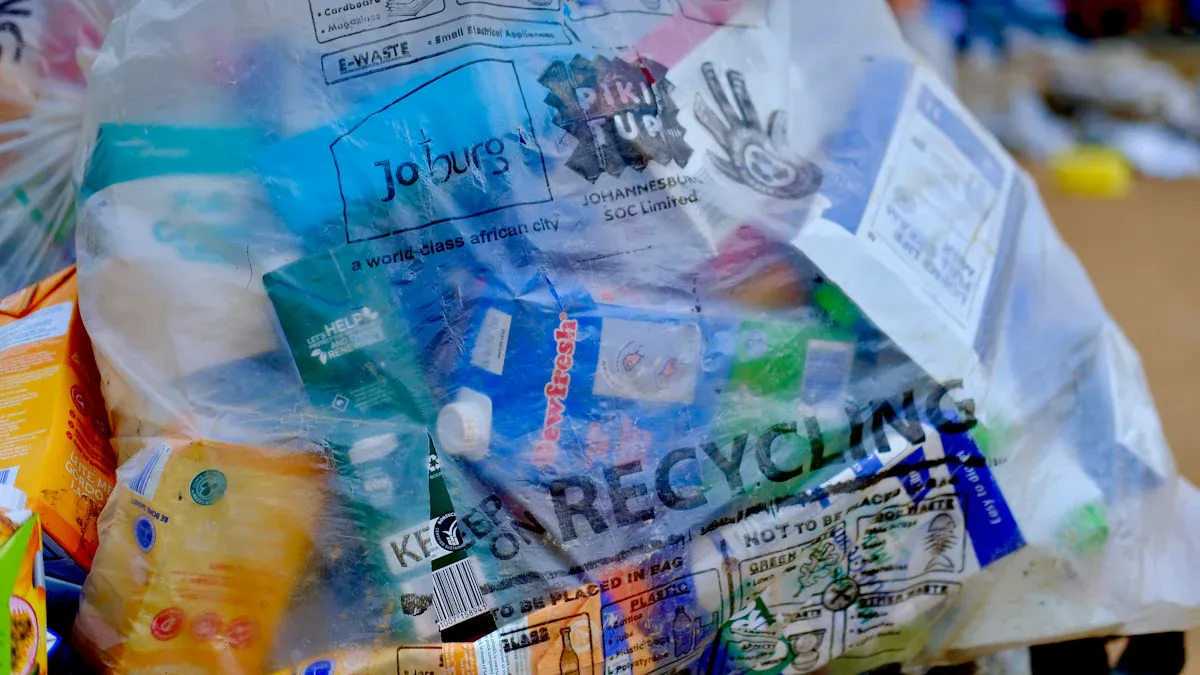
When you pick packaging, think about what happens after use. End-of-life solutions help cut down on waste. They also support a circular economy. Ask your mailer box supplier about ways to throw away or recycle boxes. This step keeps your brand safe and helps the earth.
Recyclability
Always ask if your mailer boxes custom and custom mailer box inserts can be recycled. Most paper mailer boxes custom go in curbside recycling bins. Poly mailers need special drop-off spots. Some cities do not take some plastics. Check local rules before you tell customers about recyclability.
Ask your mailer box supplier for recycling rules.
Request How2Recycle labels for your custom mailer box inserts.
Find out if glues or coatings stop recycling.
Here is a table to compare recycling choices:
Tip: Give customers easy instructions. Use pictures or short notes on your mailer boxes custom. This helps people recycle the right way.
Compostability
Some packaging can break down in compost. Compostable mailer boxes custom and custom mailer box inserts use plant-based stuff. These boxes turn into soil in a compost bin. Check if the packaging meets compost rules like ASTM D6400 or EN 13432.
Ask your mailer box supplier for compostable certificates.
Request details about home composting or industrial composting.
Find out if inks and glues are safe for compost.
Not all compostable packaging works in every compost bin. Home composting needs simple materials. Industrial composting uses high heat and special steps. Tell your customers how to compost custom mailer box inserts.
Note: Compostable is not the same as biodegradable. Compostable packaging needs the right conditions to break down. Always give your customers clear instructions for throwing it away.
Checklist for End-of-Life Solutions:
Ask your mailer box supplier if packaging is recyclable, compostable, or biodegradable.
Request tips for throwing away mailer boxes custom and custom mailer box inserts.
Share disposal tips with your customers using labels or inserts.
Check local recycling and composting rules before making claims.
You help your customers and the planet when you give clear end-of-life solutions for your packaging.
9. Reusability and Durability
When you pick packaging, it should protect your stuff. It should last for many uses. Ask your mailer box supplier if their boxes are made to be reused and strong. This helps your brand make less trash and save money.
Protection During Shipping
Your packaging needs to keep things safe from harm. Strong mailer boxes custom and custom mailer box inserts use smart designs. These help boxes handle bumps and drops during shipping. Look for these features:
Interlocking flaps and wings make boxes easy to put together. They also make boxes strong, so you do not need tape.
Two side walls give more strength. They help boxes not get crushed.
Thicker corrugated cardboard with flutes adds even more power. It protects against heavy pressure.
Custom mailer box inserts fit your items. They stop things from moving around in the box.
Not using plastic or cellophane inside the box makes opening the box better. It also makes people want to reuse the box.
Tip: Ask your mailer box supplier about the materials and design features. These help keep your products safe when shipping. Good mailer boxes custom can lower returns and make customers happy.
Reusable Packaging
Reusable packaging helps your brand support the circular economy. When you use mailer boxes custom and custom mailer box inserts made for reuse, you make less trash. You also show you care about the planet. Here are ways suppliers make packaging reusable:
Make mailer boxes custom easy to open and close. This helps customers use them again.
Use recyclable and biodegradable materials. These help boxes last through many uses.
Offer printing and branding options. This makes boxes look cool and makes people want to keep them.
Create a fun and simple unboxing experience. This makes customers want to save the box.
Many suppliers now have circular packaging programs. These programs include:
Using recycled padded mailers and paper stickers instead of single-use plastics.
Helping marketplaces cut down on extra packaging and unused stock.
Making products last longer by fixing, remaking, and using new designs.
Working with circular communities to get better and stay honest.
Giving reusable packaging like corrugated plastic totes and foam inserts. They also offer cleaning, fixing, and tracking services.
Note: Ask your mailer box supplier about circular packaging programs. Ask for info on how strong the boxes are, how to fix them, and how you can send them back or use them again. This helps your brand be a leader in caring for the planet.
10. Supply Chain Responsibility
When you pick a mailer box supplier, look at more than just the box. Responsible supply chains help people and protect the planet. You should ask questions to make sure your packaging is fair and honest.
Labor Practices
You want your packaging to come from a supply chain that treats workers right. Good labor practices mean safe jobs, fair pay, and respect for everyone. Here are some things to check:
Fair Wages: Ask if workers get enough money to live, not just the lowest pay allowed. Living wages help workers buy food and care for their families.
Safe Working Conditions: Make sure your supplier has safe factories and fair work hours.
No Exploitation: Check that there is no child labor or forced labor anywhere.
Supplier Codes of Conduct: Ask if your mailer box supplier has rules for labor and shares them with all partners.
Training and Support: Find out if workers learn about their rights, health, and safety.
Use this table to help you ask the right questions:
Tip: Ask your supplier for proof of fair pay and safe jobs. Look for certificates or reports from audits.
Many brands, like Adidas and IKEA, join global groups to make labor better. Companies such as Ben & Jerry’s and Patagonia use fair trade to show they care.
Transparency
You need to know how your mailer boxes custom and custom mailer box inserts move through the supply chain. Transparency means your supplier tells you where materials come from and how workers are treated.
Supply Chain Mapping: Ask your mailer box supplier to show where every part comes from.
Audit Reports: Ask for recent audit results or checks by other groups.
Open Communication: Good suppliers answer your questions and share info about their factories and partners.
Traceability Tools: Some companies use digital tools, like blockchain, to track products and prove they are made right.
Community Impact: Ask how your supplier helps local communities or supports workers.
Note: Transparency builds trust. When your supplier shares clear info, you can show your customers that your mailer boxes custom and custom mailer box inserts come from a good source.
You may have problems, like hard-to-follow supply chains or high costs. Surprise checks and working with outside groups can help you check claims. When you ask for transparency, you help make the whole industry better.
You help your brand when you ask your mailer box supplier these 10 questions. Make sure you get clear answers and real certifications. Ask for papers that show what the supplier does.
Check different suppliers by looking at their reports and certificates. Look at their Life Cycle Analysis data too.
Ask for facts about recycled content and how boxes are made. Find out how to throw away mailer boxes custom and custom mailer box inserts.
Pick suppliers who have proof from other groups, like EcoVadis or UL Environmental Claim Validation.
Set goals for using sustainable packaging. Teach your team and customers how to throw away packaging the right way.
Pick suppliers who care about the planet. This helps make the future better.
FAQ
What is the difference between recyclable and compostable mailer boxes custom?
Recyclable mailer boxes custom go in recycling bins. They get turned into new things. Compostable boxes break down into soil in compost bins. Always check local rules before telling customers how to throw away custom mailer box inserts.
How can you verify the recycled content in custom mailer box inserts?
Ask your supplier for certificates and proof. Look for checks from groups like SCS Global Services or Intertek. You can also ask for a Bill of Materials. This paper shows the exact recycled content in your custom mailer box inserts.
Do eco-friendly inks affect the durability of mailer boxes custom?
Eco-friendly inks, like soy-based or water-based, do not make mailer boxes custom weaker. These inks give bright colors and safe printing. Your packaging will stay strong and look good with these inks.
Can you reuse custom mailer box inserts for multiple shipments?
You can reuse custom mailer box inserts if they are clean and not broken. Many suppliers make inserts that last for more than one use. Reusing packaging helps you make less trash and reach your sustainability goals.
What certifications should you look for in mailer boxes custom?
Look for FSC, SFI, or PEFC certifications for paper mailer boxes custom. For plastic packaging, ask about Association of Plastic Recyclers (APR) certification. These certificates show your packaging meets tough sustainability rules.
How do you know if mailer boxes custom are safe for food products?
Ask your supplier for food safety certificates like FDA or EU papers. You should get proof that mailer boxes custom and custom mailer box inserts are safe for food contact.
Why does local sourcing matter for custom mailer box inserts?
Local sourcing cuts down on shipping pollution and makes delivery faster. You help your community and lower your carbon footprint by picking suppliers close by.
What should you do if your supplier cannot provide sustainability documentation?
Ask your supplier for a clear reason why they cannot give proof. Think about finding another supplier if they do not share certificates and reports. Good suppliers always give documents for mailer boxes custom and custom mailer box inserts. These papers build trust and prove their claims.
